Learn how to make your own tikka masala powder recipe at home. Make this spicy, fragrant seasoning blend in just a few minutes. It uses keto-friendly, low-FODMAP spices and is perfect for any tikka recipe or tikka masala recipe. It’s so much better than store-bought!
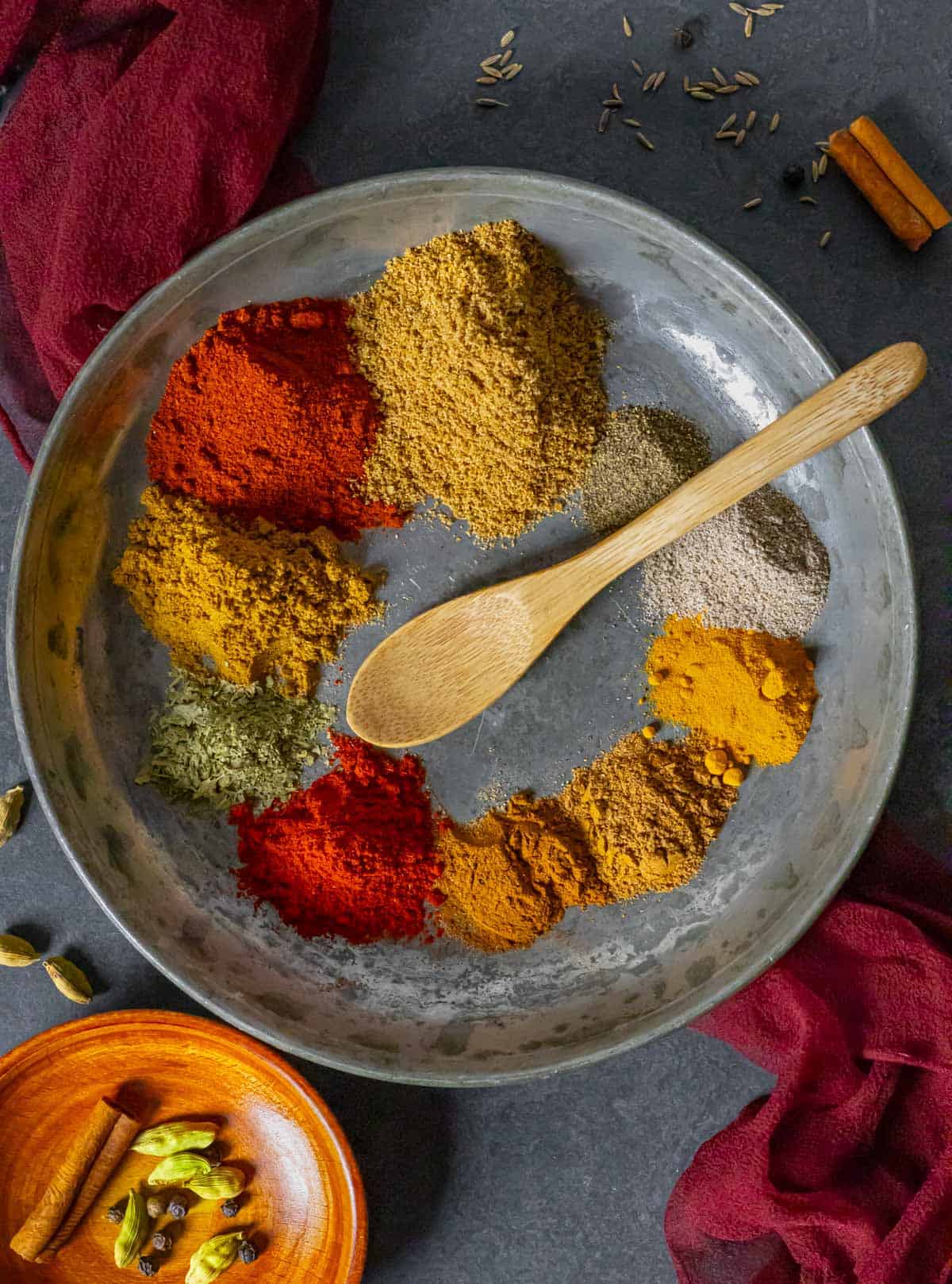
Jump to:
This recipe is a blend of aromatic, warm spices that flavors many popular Indian and Indian fusion dishes. I like to use it on fish recipes like this Indian Spiced Salmon, or as a spice variation on an Air Fryer Halibut. It also is exquisite as a spice substitution/alternative in Tomato and Onion Chutney. While you can find it in most grocery stores and online, making it yourself is superior to any store-bought.
There are two ways to make a tikka spice mix. The first is the easiest method, using powdered ingredients. In the second (traditional) method, toast whole spices, then cool and grind them together. While both methods make a wonderful seasoning, roasting the whole spices creates a richer more aromatic flavor. Using pre-powdered spices is very convenient and makes a masala blend that you’ll want to use on just about everything. Whichever one you choose, I include easy instructions and ingredient variations for both.
Why you’ll love this recipe
- So easy – homemade tikka spice is super simple to make and has better flavor than store-bought
- Customizable – you can customize the ingredients to your taste. If you want more spice, add more chili.
- Save money – making your own spice blends is often much less expensive than buying pre-made
- Versatile – this is a delicious rub that is quite versatile. You can use it as a dry rub (for tikka recipes) or for Indian gravy recipes, like a creamy, restaurant-style chicken tikka masala.
- Special diet friendly – this recipe uses all paleo, Whole30, low-FODMAP spices and keto seasonings. Keto tikka masala is just so, so good.
Garam masala vs tikka masala
There are a great many different types of masala, with garam and tikka probably being the most used in the US. The ingredients in the two spice blends tend to vary depending on the region of India where they originate.
Even though the two masalas contain many of the same spices, the amount of each ingredient used makes a big difference. Tikka spice tends to be spicier and hotter than garam, with the inclusion of chili pepper, turmeric and paprika. And, it will often contain a larger number of spices than garam.
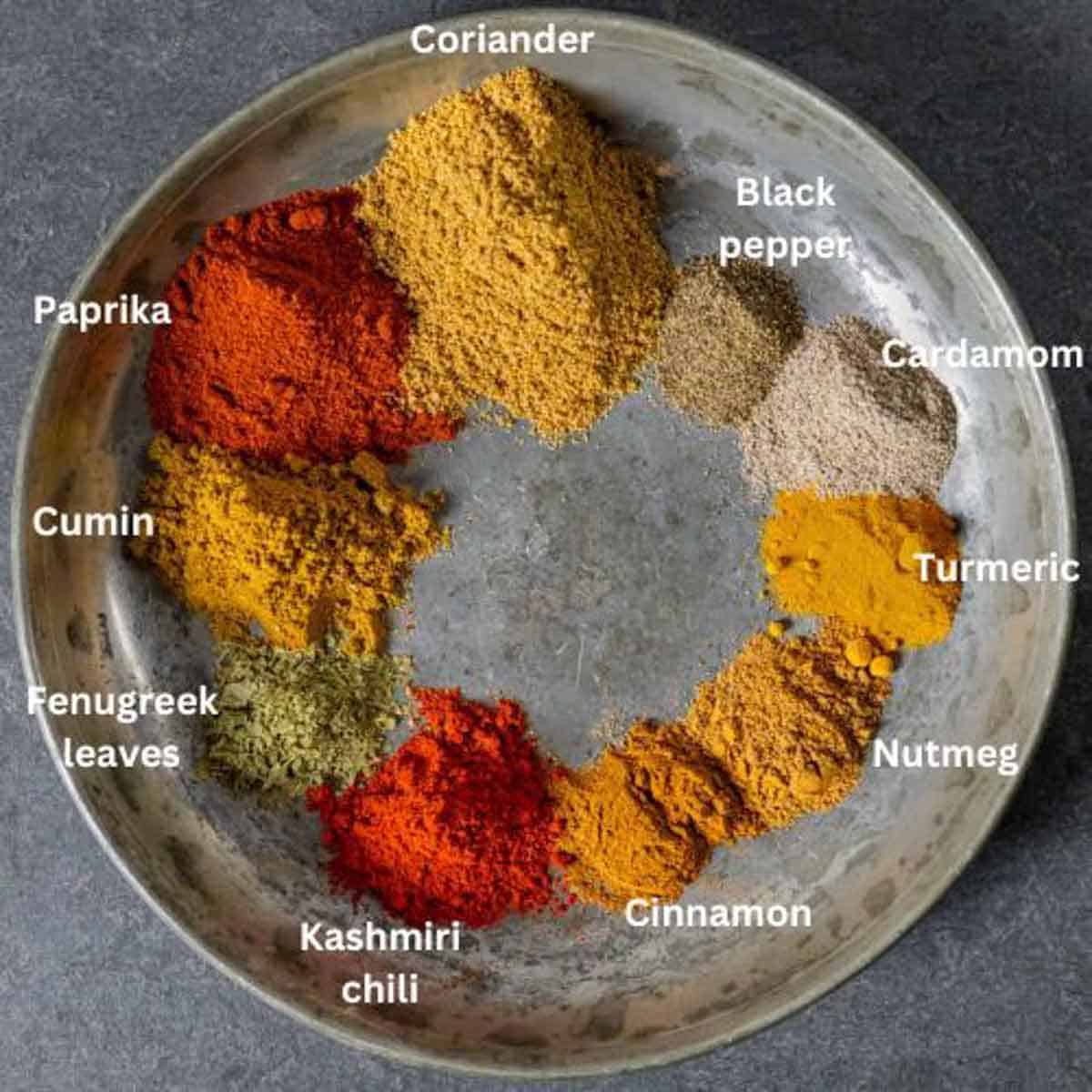
Ingredients
This recipe includes a symphony of flavors that create one of the best spice combinations, ever:
- Coriander – tart, refreshing with a hint of citrus
- Paprika – sweet, smoky, spicy and earthy
- Cumin – nutty, sweet, spicy with warm earthiness
- Fenugreek leaves – optional. Read more about fenugreek leaves in my Kasuri Methi ingredient spotlight.
- Chili powder – Kashmiri chili powder is best and most commonly used. It's my very favorite chili powder and I use it in variations of many spice blends, like my All-Purpose Seasoning, Buffalo Rub and Beef Rub.
- Turmeric – slightly peppery, pungent and citrusy
- Nutmeg – bright and aromatic, slightly sweet and nutty
- Cinnamon – warm, sweet and woody
- Cardamom – floral, sweet and warm
- Black pepper – spicy and earthy. It rounds out the flavors and brings them together.
For those following a low-FODMAP diet for IBS, this recipe contains a fair amount of capsaicin from the paprika, chili and black pepper. While it can still be added to your favorite low-FODMAP Indian recipe, the capsaicin can aggravate IBS symptoms in some people.
What is Kashmiri chili powder?
Kashmiri chili is an Indian chili pepper that contributes a vibrant red color and magical flavor to dishes. These peppers have low-moderate heat (between 1000-2000 Scoville heat units), and typically flavor cuisines from North India. Known for having a floral, smoky, fruity flavor, use them to provide a slight heat and color to many curry dishes. Kashmiri chili powder is one of my favorite ingredients, along with Aleppo pepper and kala namak black salt.
Kashmiri chilis are available whole, or in powdered form. Whole, dry chilis are typically toasted with other whole spices, then ground. Kashmiri chili powder is available online and in some Asian and International markets.
Kashmiri chili has not been tested for FODMAPs, but like other peppers, is most likely a low-FODMAP chili in servings of up to 28g. This recipe stays far below that threshhold.
If you need to use a Kashmiri chili substitute, you can substitute with a 3:1 ratio of smoked paprika and cayenne pepper. Smoked paprika is similar to the flavor of the peppers and cayenne lends a touch of heat.
I can't emphasize enough how delicious these peppers are. Depending on where you purchase them, you may have to purchase a large quantity of whole or ground peppers, but I guarantee it's worth it. You'll use it. Use Kashmiri chili powder in your favorite keto Indian food or in any recipe that calls for chili powder. A favorite is to use it in my Buffalo Chicken Rub that makes it unique and extremely flavorful. If you don't want to replace it 1:1 for other chili powders, consider replacing 50% of standard chili powder with Kashmiri. The aromatics of this pepper are so wonderful, they create a flavor that's kind of supernatural.
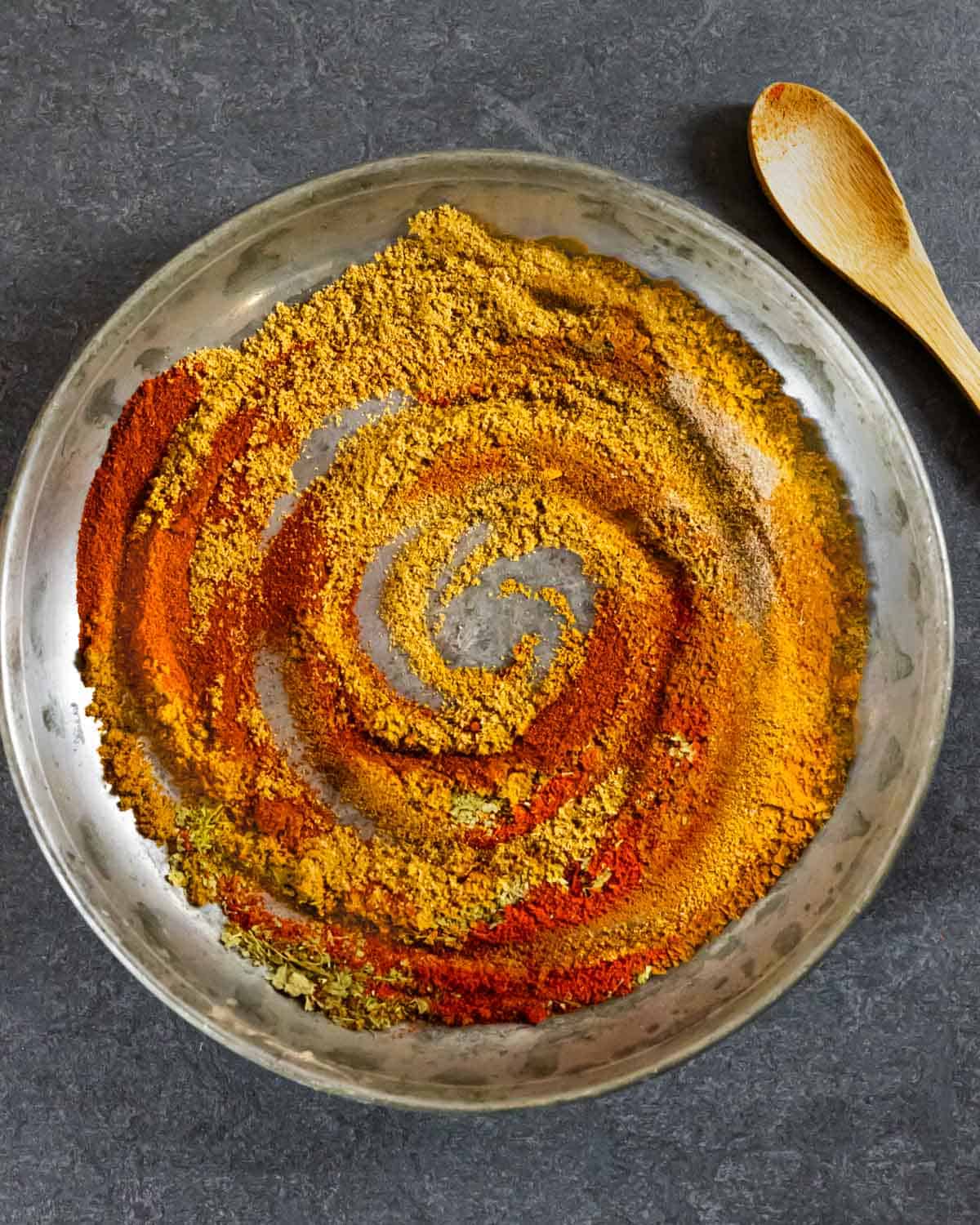
Instructions
Using pre-powdered spices
Making spice blends from powders is very fast, easy and convenient. The flavor is a bit different than toasting whole spices, but it will still be incredibly flavorful.
- Measure all ingredients into a small bowl
- Stir or whisk together until thoroughly combined
TIP: Consider crushing the fenugreek leaves with your fingers or crushing in a mortar and pestle before combining with the other ingredients.
Using whole spices
For the very best flavor of traditional tikka masala, roasting whole spices creates an incredible aroma and flavor.
- In a large skillet, add whole coriander seeds, cumin seeds, dry Kashmiri chilis (if using), green cardamom pods, the cinnamon stick and black peppercorns
- Dry roast over medium heat until fragrant and very slightly browned. Don’t overcook.
- Let cool (this will take about 10 minutes)
- In a small bowl, add the powdered spices: paprika, chili powder (if not using whole chilis), turmeric and nutmeg
- Place the cooled, toasted spices and fenugreek leaves in a coffee grinder or spice grinder and grind to a fine powder
- Add to the bowl of powdered spices and mix well
How to use
- Make a homemade Tikka Masala Paste – combine with tomato paste, fresh ginger and oil or yogurt. Use the paste as a marinade for dishes such as chicken tikka masala or other recipes with a curry sauce.
- Spicy coleslaw – add ¼ teaspoon to Cilantro Lime Coleslaw for some additional wow factor
- Use as a dry rub – for use in tikka recipes or sprinkle onto meat, poultry or fish, like in this Indian Masala Salmon recipe
- Spice up cauliflower rice – add to homemade cauliflower rice for an amazingly delicious Indian fusion side dish recipe
- Add to salad dressing – add a pinch to Cilantro Lime Salad Dressing
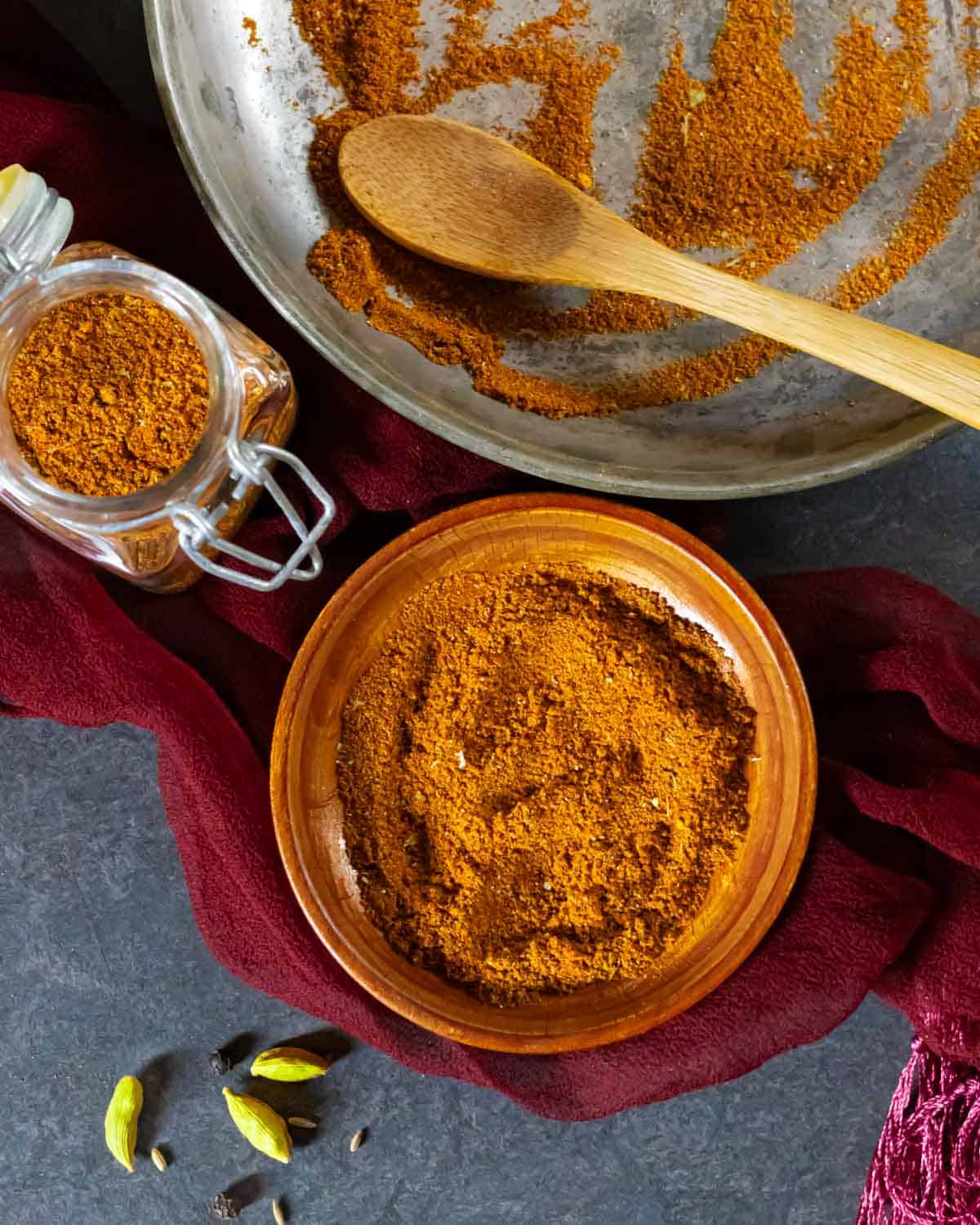
How to store
Store spices in a sealed container (preferably glass), away from bright light and heat. It will stay good for several months, up to a year.
Variations
Here are some additional spices that can be included, each adding their own nuance:
- Amchur powder (dry mango powder) – amchur powder has a fruity, sour taste and is available in some Asian or International markets, as well as online. It is a popular ingredient to use in this spice blend. As a mango powder substitute, consider using tamarind powder, sumac, lemon or orange peel powder in its place. My favorite replacement is orange peel powder. It adds a hint of citrus, but doesn’t include the sweetness of mango. For low-FODMAP, mango is high in fructose, but can be consumed in small quantities. If included in this recipe, one serving of spice mix is far below the recommended maximum serving of fresh mango, which is about 40g.
- Powdered ginger – adds a pungent, spicy aroma with a hint of pepper
- Clove – adds a subtle, sweet flavor with a little bitterness and astringency. Use whole cloves if toasting whole herbs or add ground cloves.
FAQ
Simply put, masala refers to a blend of spices (and sometimes legumes, nuts and grains), where curry is a kind of cooked dish.
Curry powder, sold in Western markets, is made from spices that are used for various masala recipes. In India, there is no such thing as a ‘curry powder’.
Curry is a generic term that refers to an Indian dish containing sauce, with key flavors coming from spices. Curries will contain vegetables, meat or paneer. The spice blends used to make curry dishes typically contain masala as an ingredient.
Masala is a powdered or whole spice blend. There are many varieties of masala blends in Indian cuisine, each with a unique flavor profile and different uses. Some are used in cooking (such as tikka masala) where others are used as a garnish or condiment, added to a dish before serving, such as chaat masala.
Masala is a spice mixture that is ground into a powder or made into a paste. Literally translated, it is the Hindi word for “spice”.
It is the Hindi term for “small chunks”. The term 'tikka masala' refers to small chunks of meat, poultry, paneer or vegetables cooked in a spiced sauce.
Tikka is marinated pieces of meat, poultry, fish or paneer that is typically skewered and cooked in a tandoor, grilled or broiled. It is typically served as a side dish or appetizer. Tikka masala is a main course of meat, poultry, fish or paneer that has been cooked in a spicy curry sauce and is often served with rice.
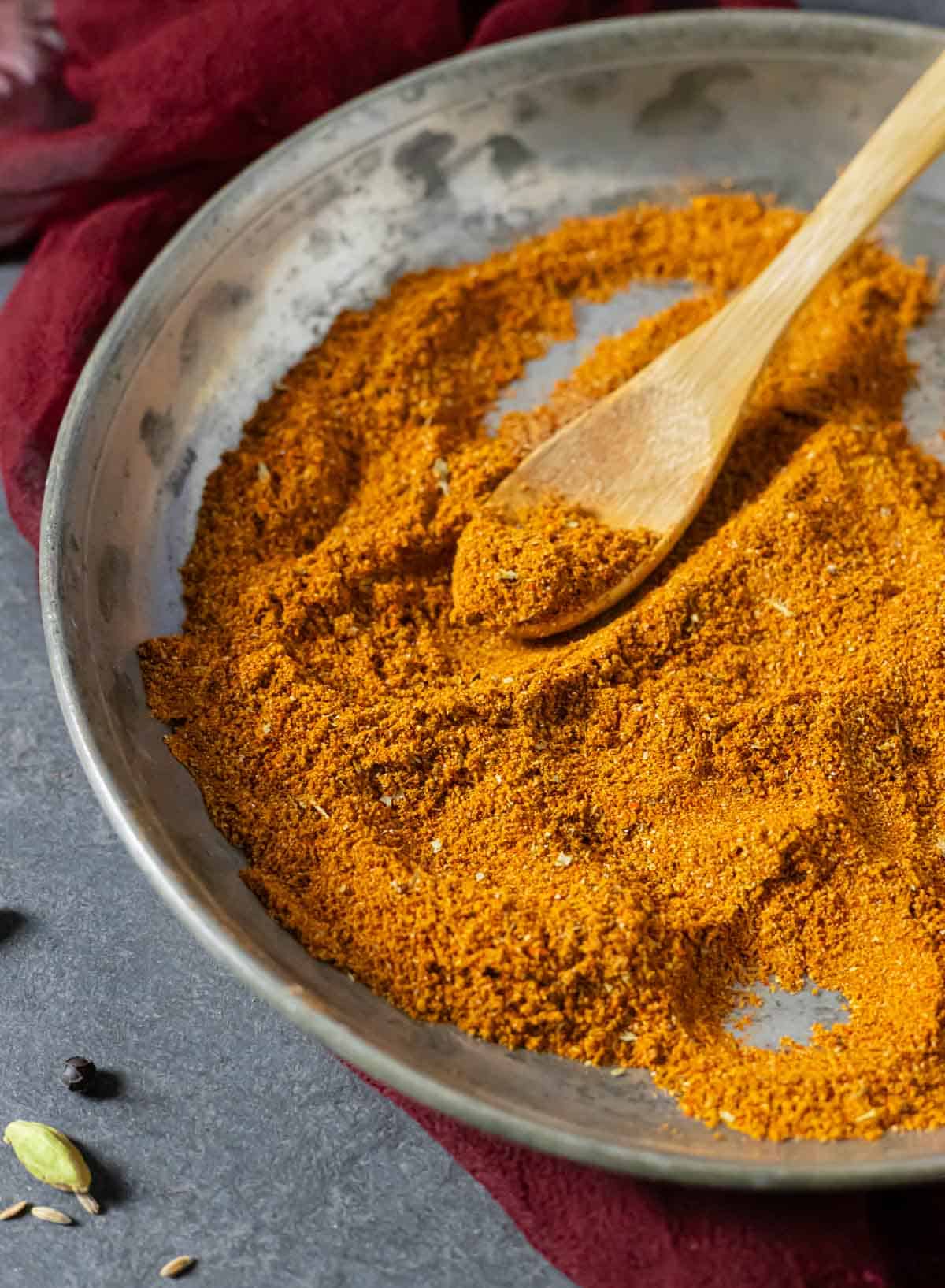
Did you make this recipe? Let me know how you liked it by giving a star rating and leaving a comment!
📖 Recipe
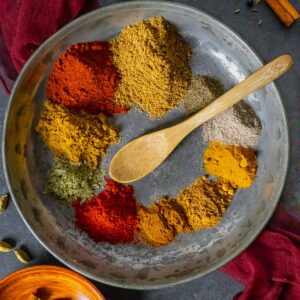
Tikka Masala Powder Recipe
Ingredients
Using powdered ingredients
- 2 tablespoons coriander
- 2 tablespoons paprika
- 2 teaspoons cumin
- 2 teaspoons fenugreek leaves (optional - read more about fenugreek leaves in my Kasuri Methi ingredient spotlight)
- 2 teaspoons Kashmiri chili (see Notes for Kashmiri powder substitute)
- ½ teaspoon turmeric
- ½ teaspoon nutmeg
- ½ teaspoon cinnamon
- ½ teaspoon cardamom
- ½ teaspoon black pepper (ground)
Using whole spices
- 4 tablespoons coriander seeds
- 2 tablespoons powdered paprika
- 2 tablespoons cumin seeds
- 2 teaspoons fenugreek leaves (optional)
- 4 each dry Kashmiri chilis (see Notes for Kashmiri chili substitute)
- ½ teaspoon turmeric powder
- ½ teaspoon nutmeg powder
- 1 small cinnamon stick
- 6 each green cardamom pods
- 1 teaspoon black peppercorns
Instructions
Using powdered spices
- Measure all ingredients into a small bowl.
- Stir or whisk together until thoroughly combined.
Using whole spices
- In a large skillet, add coriander seeds, cumin seeds, dry Kashmiri chilis (if using), green cardamom, cinnamon stick and black peppercorns.
- Dry roast over medium heat until fragrant and very slightly browned. Don’t overcook.
- Let cool (this will take about 10 minutes).
- In a small bowl, add the paprika, turmeric, chili powder (if not using whole chilis) and nutmeg.
- Place the cooled, toasted spices and fenugreek leaves in a coffee grinder or spice grinder and grind to a fine powder.
- Add ground spices to the bowl of powdered spices and mix well.
Notes
How to use
- Make a homemade tikka masala paste – combined with tomato paste, fresh ginger and oil or yogurt. Both pastes are often used as a marinade for dishes that include a curry sauce.
- Spicy coleslaw – add ¼ teaspoon to Cilantro Lime Coleslaw for some additional wow factor!
- Use as a dry rub – for use in tikka recipes or sprinkle on meat, poultry or fish, like in my Indian Spiced Salmon recipe.
- Spice up cauliflower rice – add to homemade cauliflower rice
- Add to salad dressing – add a pinch to Cilantro Lime Salad Dressing
Variations
- Amchur (dried mango) powder – amchur has a fruity, sour taste and is available in some Asian or International markets, as well as online.
- Ground ginger – adds a pungent, spicy aroma with a hint of pepper
- Clove – adds a subtle, sweet flavor with a little bitterness and astringency. Use whole cloves if toasting whole herbs or add ground cloves.
Nutrition
*Net carbs = carbohydrates - fiber
Nutritional information is an estimate, calculated using online tools and does not include optional ingredients unless otherwise indicated.

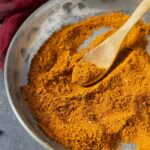
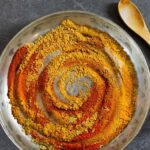
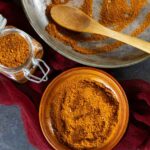
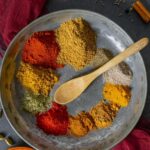

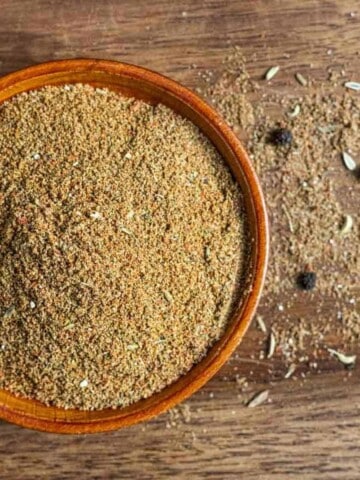
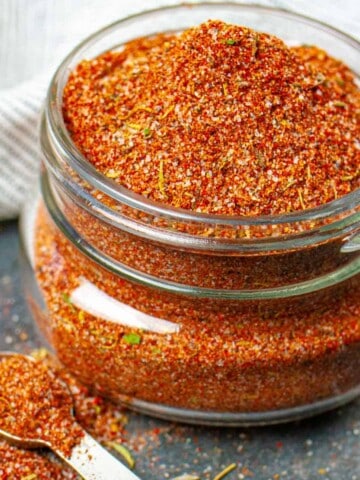
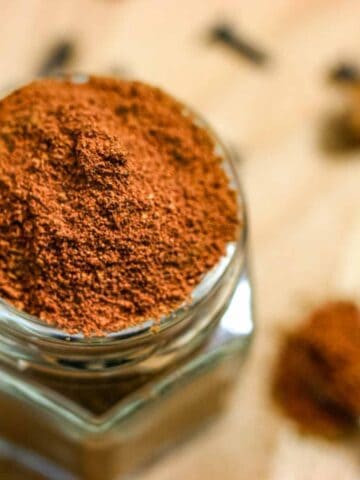
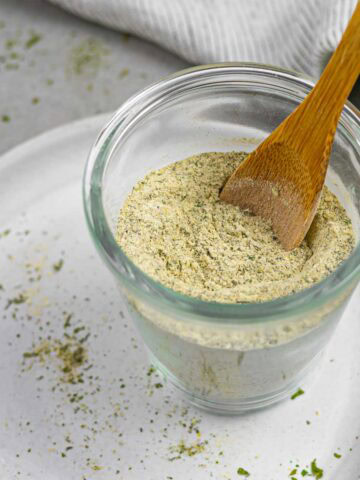
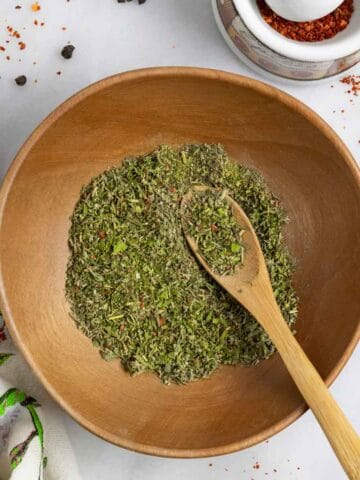
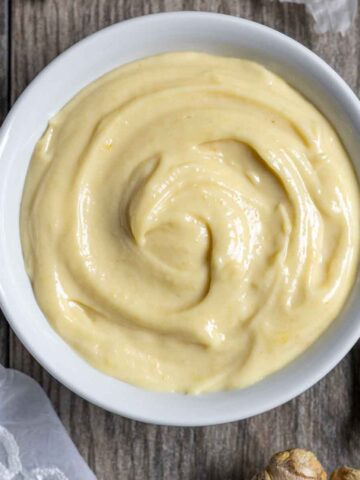
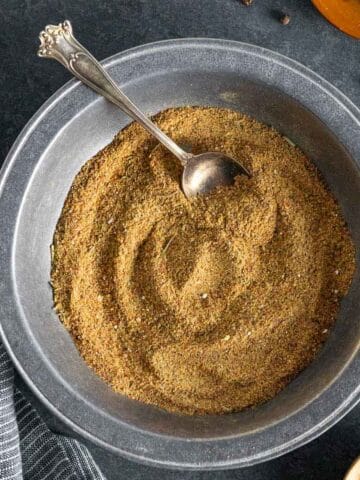
Comments
No Comments